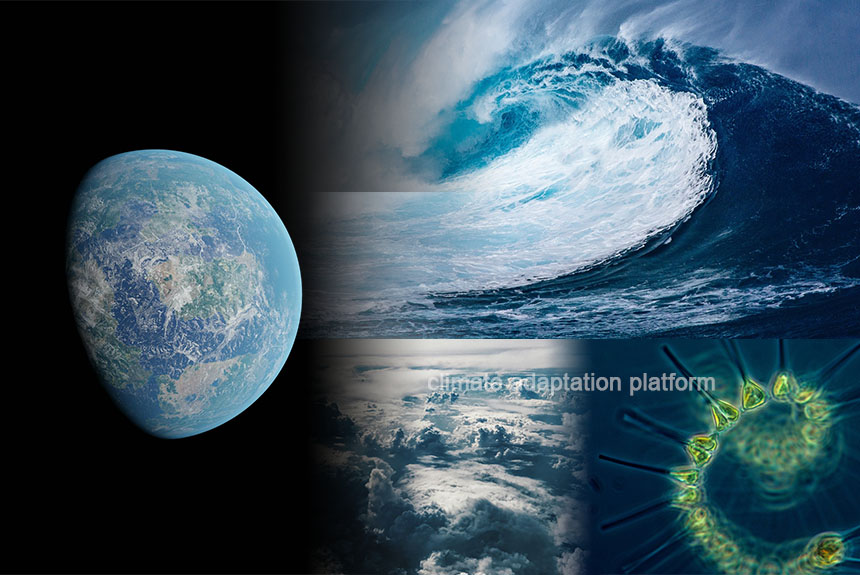Global warming is changing the Earth’s oceans and atmosphere. As temperatures rise, some parts of the ocean witness an increase in microscopic organisms, leading to a noticeable greening effect.
Meanwhile, dust storms in one region can impact the air quality in distant areas. Additionally, smoke from extreme wildfires can engulf wide areas for an extended time, causing changes to the atmosphere.
NASA launched a climate mission called the Plankton, Aerosol, Cloud, ocean Ecosystem (PACE) satellite from a space force station in Florida on 8 February 2024. The newest Earth-observing satellite will help us better understand how the ocean and atmosphere interact and the effects of a changing climate.
According to NASA, the PACE mission will study the impact of tiny, often invisible things from hundreds of miles above Earth: microscopic life in water and microscopic particles in the air.
The spacecraft carries a hyperspectral ocean colour instrument (OCI) and two polarimeter instruments. The OCI will allow researchers to measure oceans and other waterbodies across a spectrum of ultraviolet, visible, and near-infrared light.
This will enable them to track the distribution of phytoplankton and—for the first time from space—identify which communities of these organisms are present on daily, global scales. Scientists and coastal resource managers can use the data to help forecast the health of fisheries, track harmful algal blooms, and identify changes in the marine environment.
The two polarimeter instruments, Hyper-Angular Rainbow Polarimeter #2 and Spectro-polarimeter for Planetary Exploration will detect how sunlight interacts with particles in the atmosphere, giving researchers new information on atmospheric aerosols, cloud properties, and air quality at local, regional, and global scales.
The press release states, “With the combination of the instrument and the polarimeters, PACE will provide insights into the interactions of the ocean and atmosphere and how a changing climate affects these interactions.”
The importance of understanding and protecting the oceans and atmosphere
The ocean is critical in supporting livelihoods and economies around the globe, not to mention that 40% of the global population lives within 100 km of the coastline, but the ocean is not static; it is complex and changing. Events like harmful algal blooms and El Niño can impact the economy and livelihoods worldwide. Also, learning how the ocean responds to climate change can produce reliable forecasts that will be valuable to industries that rely on it.
PACE observation of the aerosols and clouds will improve weather and climate forecasts and critical information on aerosols in the atmosphere, such as dust, pollen, and smoke, that lower air quality, which can help people lead to respiratory illnesses and hence could drive action.
An important contribution of PACE is the study of aerosols and clouds. Aerosols can impact the amount of solar energy reaching Earth. The effect of human-produced aerosols on clouds – and the impact on climate – is not well understood. PACE measurements will help clarify the connections between aerosols, clouds, and climate.
Measuring the atmosphere and oceans together
“The ocean and atmosphere are directly connected, moving and transferring energy, water, nutrients, gases, aerosols, and pollutants. Aerosols, clouds and phytoplankton can also affect one another. For example, certain aerosols may contribute to plankton blooms, while some plankton produce substances that act as seeds for cloud formation. How aerosols influence the ocean ecosystem – and vice versa – are key questions PACE scientists plan to investigate by looking at a broader picture of ocean and atmosphere interactions. These complex relationships are part of the larger climate system; thus, studying them together is advantageous” (Get to know, n.d.).
“Earth’s oceans are responding in many ways to climate change – from sea level rise to marine heat waves to biodiversity loss. With PACE, researchers can study climate change’s effects on phytoplankton, which play a key role in the global carbon cycle by absorbing carbon dioxide from the atmosphere and converting it into their cellular material. These tiny organisms drive larger aquatic and global ecosystems that provide critical resources for food security, recreation, and the economy” (NASA Launches, 2024).
Learn more about NASA’s Plankton, Aerosol, Cloud, ocean Ecosystem (PACE) satellite
Source:
NASA Launches New Climate Mission to Study Ocean, Atmosphere. (2024, February 8). NASA. Retrieved from https://www.nasa.gov/news-release/nasa-launches-new-climate-mission-to-study-ocean-atmosphere/?
Get to Know PACE. (n.d.) PACE. Retrieved from https://pace.oceansciences.org/about.htm



Leave a Reply